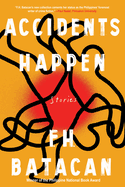
| Publisher: | Soho Crime | |
| Genre: | Asia (General), World Literature, Collections & Anthologies, Short Stories (single author), Mystery & Detective, Fiction | |
| ISBN: | 9781641295116 | |
| Pub Date: | March 2025 | |
| Price: | $25.95 |
| Starred | Fiction |
by F.H. Batacan
Filipino journalist F.H. Batacan's Philippine National Book Award-winning debut, Smaller and Smaller Circles, is widely regarded as the first Philippine crime novel. All manner of crimes--corruption, assault, murder--along with everyday injustice, haunt Accidents Happen, Batacan's magnificent, searing collection of 11 partially linked stories.
At least three irresistible recurring characters are ready for standalone titles of their own. The trio--police officer Mike Rueda, journalist Joanna "Joe" Bonifacio, Father Augusto Saenz--make their collective debut in "No. 1 Pencil," which opens with a woman's corpse at the bottom of the stairs. Rueda needs Joe to connect him to Father Gus--a full-time priest and part-time forensic anthropologist--to figure out how the young, silent stepdaughter who lives in the "dark, narrow, musty room beneath the stairs" didn't do it.
Beyond murder, Batacan is particularly adept at inserting unexpected, disturbing relationships among the living. A lonely professor begins to care for--and becomes righteously attached to--a neighbor who uses a wheelchair and whose much-younger wife seems to blithely neglect him in "Door 59." "Easy, white men" prove to be "transparent... predictable" targets for the narrator in "Harvest" for work she must do to keep her six-year-old daughter safe.
Batacan is a gloriously sly writer, never allowing complacency to simplify her narratives. Amid rising body counts and unpunished infractions, she occasionally assumes the role of both judge and executioner, adroitly inserting necessary, satisfying consequences--as with a specialty knife able to exact deserving vengeance on cheaters in "The Gyutou." Machinations and manipulations couldn't be more welcome. Audiences will only want more, more, more. --Terry Hong
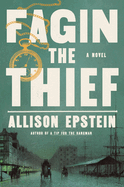
| Publisher: | Doubleday | |
| Genre: | General, Coming of Age, Thrillers, Fiction, Historical | |
| ISBN: | 9780385550703 | |
| Pub Date: | February 2025 | |
| Price: | $28 |
| Starred | Fiction |
by Allison Epstein
One of Charles Dickens's most memorable and problematic characters emerges in a more fully developed and freshly sympathetic light in Fagin the Thief, a gripping and atmospheric reimagining of Oliver Twist by Allison Epstein (Let the Dead Bury the Dead; A Tip for the Hangman).
Epstein's version of Fagin was raised in a Jewish enclave of London by a widowed mother, his father having been hanged for theft before his birth. She named him Jacob after "the cleverest of the patriarchs" and imagined a great future for him. But when a pickpocket in dashing clothes catches his eye, the 11-year-old boy talks his way into an apprenticeship and discovers he has a talent. A few years later, after his mother dies, Fagin is alone in the world, with only a knack for moving unseen through all sorts of hunting grounds to preserve him. But he doesn't stay alone for long. His first protégé, the mercurial Bill Sikes, becomes his lifelong friend, his menacing shadow, and ultimately his downfall.
Epstein paints a vivid picture of seedy lower-class London, worthily succeeding Dickens's own. The narrative sometimes diverges from the original, but Epstein's author's note acknowledges these occasions and offers compelling explanations. Without, as she says, "sanitizing Fagin or disowning him," she has made Jacob into a full man, determined beyond anything to survive and too clever for the space Victorian England allowed poor boys, orphans, and Jewish people. Fans of reimagined classics should snatch this up. --Kristen Allen-Vogel, information services librarian at Dayton Metro Library
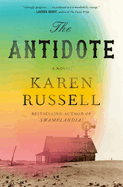
| Publisher: | Knopf | |
| Genre: | Visionary & Metaphysical, General, Literary, Fiction, Historical | |
| ISBN: | 9780593802250 | |
| Pub Date: | March 2025 | |
| Price: | $30 |
| Fiction |
by Karen Russell
It's been a considerable wait for Karen Russell to produce another novel since her first, Swamplandia!, was a finalist for the Pulitzer Prize for Fiction in 2012. Happily, The Antidote, a deeply imagined blend of gritty realism and alluring fantasy about the American Midwest in the Dust Bowl era, will amply reward readers for their patience.
On April 14, 1935--Black Sunday--a catastrophic "black blizzard" swept across the already beleaguered Great Plains of the United States. Russell's locus for her account of that devastating dust storm and its aftermath is the tiny fictional southwestern Nebraska town of Uz. Uz is home to bachelor farmer Harp Oletsky and his 15-year-old niece, Asphodel, who becomes his ward when her mother falls victim to a serial killer terrorizing the region. Another resident is immigrant Antonina Rossi, a "prairie witch" whose pseudonym provides the novel's title and who claims to store the memories townspeople share with her for a fee in her "Vault." They're joined by Cleo Allfrey, a young Black photographer who's been dispatched by the Roosevelt administration to document the farmers' plight.
Russell skillfully pulls back from the travails of her characters to excavate out of the formerly rich soil of this barren earth the story of how immigrants like Harp's Polish parents--fleeing German oppression in their homeland--ruthlessly displaced Native American tribes and then exploited the land in ways that set the stage for its eventual ruin. In doing so, Russell has created a tender story of how our memories sustain us in the face of significant loss and a frank reckoning with a painful period of American history. --Harvey Freedenberg, freelance reviewer

| Publisher: | Hogarth Press | |
| Genre: | Hispanic & Latino, Feminist, Mystery & Detective, Literary, Fiction | |
| ISBN: | 9780593737002 | |
| Pub Date: | February 2025 | |
| Price: | $28 |
| Fiction |
by Cristina Rivera Garza, trans. by Sarah Booker, Robin Myers
One doesn't often encounter novels that fuse Argentinian poetry, detailed literary analysis, and a castrating serial killer, but that's the combination on offer in Death Takes Me, Pulitzer Prize winner Cristina Rivera Garza's (The Iliac Crest; New and Selected Stories) entertainingly wince-inducing concoction, translated from the Spanish by Sarah Booker and Robin Myers.
In the novel, Cristina Rivera Garza, also a Mexican professor of literature, goes out for a run one night and makes a terrifying discovery: a dead man whose testicles have been lopped off. Soon, three more men are castrated. A female investigator known only as "the Detective" contacts Garza to take her statement and to draw upon her literary expertise. Found next to each victim are lines from the poetry of Alejandra Pizarnik, a real-life Argentine poet who died in 1972. The Detective hopes Garza's knowledge will help her find the killer.
As in any good thriller, complications ensue. First, "the Tabloid Journalist," who says she wants to write a book about the murders, shows up. Then, cryptic notes in Pizarnik's voice appear under Garza's door. Soon, more messages appear, all of them by a young woman who ominously warns Garza to stop talking to the Detective. In 97 short chapters, Garza combines her clipped writing style--"A collection of impossible angles. A skin, the skin. Something on the asphalt. Knee. Shoulder. Nose. Something broken. Something dislocated"--with original poems, critical appraisal of Pizarnik's work, and truly chilling moments. What could have been a tawdry potboiler is instead an intelligent, intricate examination of human nature. It's challenging, but great fun. --Michael Magras, freelance book reviewer
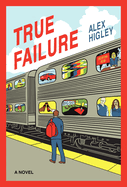
| Publisher: | Coffee House Press | |
| Genre: | Family Life, Absurdist, Satire, Literary, Marriage & Divorce, Fiction | |
| ISBN: | 9781566897136 | |
| Pub Date: | February 2025 | |
| Price: | $18 |
| Fiction |
by Alex Higley
True Failure by Alex Higley (Cardinal; Old Open) is a clever, comedic send-up of the 21st-century meanings of success and failure.
The novel opens as Ben, a Chicago, Ill., accountant, has just lost his corporate job. Ben is leery of sharing this news with his wife, Tara. The couple is struggling to pay off tens of thousands of dollars of mortgage, credit card, and student loan debt, and he doesn't want to upset her. Instead, a random conversation with a friend inspires him to become a contestant on Big Shot, a reality TV program--and to conceal this from Tara as well. The show features up-and-coming entrepreneurs who pitch new product ideas to celebrity investors for prize money. However, in order for Ben to land an audition, he must devise a concrete commercial idea ASAP.
Meanwhile, Tara, a "dormant artist" who cares for other people's children, struggles with issues of her own, such as an emotionally scarring incident from the past and a burdensome personal secret that she cannot bring herself to share with Ben just yet. As the two of them circumvent the truth, Marcy, who works behind the scenes of Big Shot, ultimately shapes the couple's story. This woman, too, is living a life shrouded in dark secrets.
Higley's insightful, inventive storytelling shines in his third book. Eccentricities of the absurd elevate this deeply thought-provoking take on capitalism and the consequences of deception. --Kathleen Gerard, blogger at Reading Between the Lines
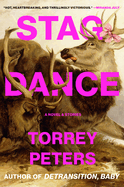
| Publisher: | Random House | |
| Genre: | Short Stories (single author), Transgender, Literary, Fiction, LGBTQ+ | |
| ISBN: | 9780593595640 | |
| Pub Date: | March 2025 | |
| Price: | $28 |
| Fiction |
by Torrey Peters
Novelist Torrey Peters (Detransition, Baby) proves she's just as agile with short fiction in Stag Dance, a dazzling and strange collection comprising a novel and three stories. She deftly presents each narrative in a different literary style--speculative fiction, teen romance, tall tale, horror--probing interactions and confrontations over identity, intimacy, sexuality, and community. Bodies satisfy and betray, accept and reject, survive and fail.
In "Infect Your Friends and Loved Ones," a "contagion" causes "a complete cessation of the production of all sex hormones." The protagonist reveals life before the contagion, the moment of infection, and her continued existence as Patient Zero. The most heartstring-pulling of the quartet is "Stag Dance," set in a illegal Midwest logging camp in winter. To boost morale, the "landlooker and job shark" boss proposes a dance. He adds, "Any man here that desires to go to the dance as a lady--you just cut yourself off a brown triangle and you pin it right over the fly of your pants, and that's how the rest of us know you're looking to be courted." Babe, who narrates, "wasn't pretty enough for it," is "too damn big," "too damn heavy," but vulnerably admits, "I had many times wondered in earnest about being courted as a woman is courted." Capital-D Drama among the 30-some men ensues.
Peters, who is transgender, reveals in her acknowledgements how she "puzzle[d] out, through genre, the inconvenient aspects of [her] transition--otherwise known as ongoing trans life." Yet a universal empathy lingers throughout her expansive storytelling--a longing for recognition and connection all readers will undoubtedly recognize. --Terry Hong
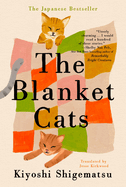
| Publisher: | Putnam | |
| Genre: | Animals, Family Life, General, Literary, Fiction | |
| ISBN: | 9780593852699 | |
| Pub Date: | February 2025 | |
| Price: | $28 |
| Fiction |
by Kiyoshi Shigematsu, trans. by Jesse Kirkwood
Japanese author Kiyoshi Shigematsu delivers a slice-of-life masterpiece in The Blanket Cats, a collection of seven stories, translated by Jesse Kirkwood, about people who rent cats from a pet shop for three days. Tinged with magical elements, the stories reveal truths about the human experience, from childhood to old age and every stage in between.
Shigematsu plays with perspective as he moves seamlessly from the shop owner to each new cat's renter; he even includes one story told from a cat's point of view. According to the pet shop owner, only the smartest and most well-behaved cats become "blanket cats," named for the blanket that accompanies them on each journey. Though the cats aren't always well-behaved, they always give the humans what they need, even when that's physical or emotional pain. The humans include a couple with infertility who have withdrawn from their friends' child-filled lives; a middle-aged woman who betrayed her beloved employers; a boy struggling with school bullying; a family sending their aging grandmother to a care home; an aimless young man whose landlord hates cats; a brother and sister running away from home; and a family preparing to move after the breadwinner is laid off from his job. They all experience problems that can't be solved by three days with a cat, but all are deeply affected by their encounters.
Often sad, sometimes explosive, and always emotionally raw, these stories reflect the weight borne by many people every day. The Blanket Cats is filled with grief, rage, and despair, but it ultimately celebrates family, resilience, and the power of connection. --Dainy Bernstein, freelance reviewer

| Publisher: | Berkley | |
| Genre: | Women, Suspense, Thrillers, Fiction | |
| ISBN: | 9780593638514 | |
| Pub Date: | March 2025 | |
| Price: | $29 |
| Mystery & Thriller |
by Deanna Raybourn
Deanna Raybourn's four female assassins from her propulsive thriller Killers of a Certain Age are back! And in Kills Well with Others the stakes and suspense are even higher, as they find themselves and the ones they care about the targets of a dangerous, unknown assassin.
Recruited in the 1970s by the Museum, a secret organization that trains assassins, Billie, Mary Alice, Helen, and Natalie became members of the agency's first all-female squad, Project Sphinx. Over the decades, the deadly team have eliminated drug lords, arms smugglers, and human traffickers. Now it's a few years after the events of the first book, and the Sphinxes have been greatly enjoying retired life, when they are summoned by the new head of the Museum. A mole within the organization is leaking the names of operatives. Agents have already been killed and the four protagonists are on the list of targets.
This new installment can easily be read as a stand-alone novel, while fans of the first book will enjoy learning character backstories through flashbacks from the '60s to the '80s. Past missions and assassinations are revisited in great and gory detail, but the banter, snark, and comedy keep things light. "Do you travel with a torture kit?" Mary Alice asked pleasantly. "No, but it would be easy enough to put one together.... The kitchen is full of useful tools."
The well-plotted mysteries, ruthless assassinations, and glamorous jet-setting are certainly a highlight of this series but so is the study of powerful and enduring friendships. As everyone knows, nothing builds bonds stronger than figuring out how to surreptitiously kill your target at a kids' birthday party. --Grace Rajendran

| Publisher: | Minotaur | |
| Genre: | Humorous, Mystery & Detective, General, Fiction, Women Sleuths | |
| ISBN: | 9781250337344 | |
| Pub Date: | March 2025 | |
| Price: | $28 |
| Mystery & Thriller |
by Elle Cosimano
Romantic suspense novelist and single mom Finlay Donovan comes under the gun--again--in a zany, fast-paced fifth adventure, Finlay Donovan Digs Her Own Grave. Author Elle Cosimano (Finlay Donovan Rolls the Dice) takes Finlay and her wacky cast of supporting characters--including her nanny and best friend, Vero; her cop boyfriend, Nick; and her ex-husband, Steven--on another wild ride involving dead bodies, dirty secrets, and interpersonal drama.
Despite her rocky relationship with her nosy neighbor, Mrs. Haggerty, Finlay must play reluctant hostess when a dead body turns up in Mrs. Haggerty's garden. As she juggles her demanding house guest, potty training, and phone calls from her literary agent, Finlay gets even more nervous when the police start eyeing Steven as a murder suspect. Convinced he didn't do it, Finlay tries to prove Steven's innocence while keeping the cops, including Nick, away from her own secrets. Meanwhile, Mrs. Haggerty's neighborhood watch activities and book club may be a front for something more clandestine (and far less literary).
Fans of Finlay's previous adventures will find plenty to enjoy here, especially the (often literal) ride-or-die friendship between Finlay and Vero. When she has a moment between crises, Finlay reflects on the relationship between truth and justice, and the ethical implications of keeping information from Nick. The murder investigation wraps up satisfyingly, but a cliffhanger will leave readers eagerly anticipating another book. Cosimano's witty series is a celebration of female friendship and a comical exploration of what happens when life keeps imitating art--with a dash of murder. --Katie Noah Gibson, blogger at Cakes, Tea and Dreams
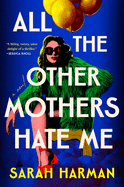
| Publisher: | Putnam | |
| Genre: | Women, Humorous, General, Suspense, Thrillers, Fiction | |
| ISBN: | 9780593851463 | |
| Pub Date: | March 2025 | |
| Price: | $29 |
| Mystery & Thriller |
by Sarah Harman
All the Other Mothers Hate Me lives up to the promise of tension and hilarity suggested by its title. In Sarah Harman's sensational debut work of comic domestic suspense, Florence Grimes, 31, is an underemployed former pop star who begins her first-person narration barely keeping it together as a single mother of 10-year-old son Dylan.
The other mothers at Dylan's posh West London school do seem to hate Florence, and not entirely without reason, though they're not particularly likable themselves. For example, there's Hope, Florence's nemesis. They used to lead the same party girl lifestyle when Florence was a member of the all-female band Girls' Night. Now, Hope drives a baby-blue Bentley with custom B0YMUM plates, and refers to herself on Instagram as a #Model, #Philanthropist, and #GirlBoss.
Dylan has a nemesis of his own: Alfie Risby, heir to a frozen food empire. And when Alfie goes missing on a school field trip where the boys were partners, Florence is desperate to deflect suspicion from Dylan. Florence starts her own investigation to clear Dylan's name with another outsider parent, American go-getter attorney Jenny. Their sleuthing is woefully inept, but extremely entertaining. Even if Florence can't find the culprit, at least she seems to have finally found a friend.
Harman incorporates plenty of very funny social satire, which, in addition to her skillful plotting, gives the narrative depth along with its sizzle. Fast paced and engrossing, All the Other Mothers Hate Me is a book that readers are sure to enjoy and will want to share widely--before it inevitably shows up as a series on one of the streaming services. --Elizabeth DeNoma, executive editor, DeNoma Literary Services, Seattle, Wash.
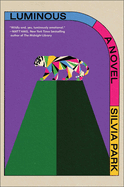
| Publisher: | Simon & Schuster | |
| Genre: | World Literature, Family Life, Crime & Mystery, Fiction, Science Fiction, Siblings, Korea | |
| ISBN: | 9781668021668 | |
| Pub Date: | March 2025 | |
| Price: | $29.99 |
| Starred | Science Fiction & Fantasy |
by Silvia Park
Robots are ubiquitously integrated into human society throughout Silvia Park's extraordinary debut novel, Luminous--as servants and staff, but also as daughters, sons, siblings, friends, even lovers. In a fast-approaching future, Korea is reunified, and robots and humans coexist symbiotically. A robot named Yoyo, once a son and a brother, is the focal point amid a disparate cast of characters who come together via serendipitous meetings, unexpected reunions, and wrenching losses.
Ruijie is the first to encounter Yoyo. She's not healthy: her young body continues to break down, forcing her to resort to customized "robowear" for mobility. Ruijie, a precocious three-time science fair winner, regularly scavenges the salvage yard, looking for usable parts to enhance her failing form. Meeting irresistible Yoyo engenders easy friendship.
Detective Jun of Robot Crimes--who was born human, but now lives in a 78% rebuilt body after a horrific accident seven years prior--is summoned to investigate a missing robot child. The search leads Jun to his younger sister, Morgan, who is a robot designer consumed at work with the latest secret project, Boy X. Growing up, Jun and Morgan had a third sibling, Yoyo, who disappeared. Their father, once the world's top neurobiotics innovator, soon arrives in Seoul, expecting to see both his human progeny. None are ready for Yoyo's reappearance.
Park is a remarkably agile writer, moving seamlessly from speculative ingenuity to poignant family drama to deeply philosophical ruminations on humanity's future. "Bionic. Transhuman. Posthuman... death is a problem that can be solved." But at what cost? In her brilliant new world, Park transforms machines into the truest barometers of humanity. --Terry Hong
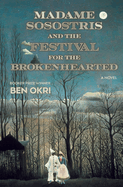
| Publisher: | Other Press | |
| Genre: | Friendship, Magical Realism, Family Life, Marriage & Divorce, Fiction | |
| ISBN: | 9781635425284 | |
| Pub Date: | March 2025 | |
| Price: | $24.99 |
| Science Fiction & Fantasy |
by Ben Okri
Nigerian poet, playwright, and novelist Ben Okri (Prayer for the Living; Dangerous Love) won the 1991 Booker Prize for The Famished Road, a lengthy novel noted for its singular style. Madame Sosostris and the Festival for the Brokenhearted is slimmer, plunging readers into a dizzying masquerade where little is as it appears to be.
By combining the fantastical elements of A Midsummer Night's Dream with allusions to T.S. Eliot's "The Waste Land," Okri creates a world that feels lush while exposing the barren landscapes--both physical and emotional--of modern humanity. Though Viv and Beatrice (and their husbands, Alan and Stephen) are British, the bulk of the story takes place in an enchanted forest in France, where Viv is holding "a festival for people who've been smashed up by love." Central to both the real and the magical elements is the famed fortune-teller Madame Sosostris, who agrees to attend Viv's festival and promises those who visit "La Fôret Sacrée" will be transformed.
Divided into four books, each with short, dialogue-heavy chapters, Madame Sosostris often reads like a play. Many of the exchanges have a sharp, almost caustic nature, putting one in mind of the absurdities of Tom Stoppard. Punctuating these moments, however, are beautiful descriptive passages and thoughtful evaluations of culture and society, pointing up the ways people will hide behind the public faces they have created. Okri, like Madame Sosostris herself, invites readers to be transformed, to recognize that "Being rejected, abandoned, makes us human," but "it is only among the broken that you find those with the humility and the vision to create a new world." --Sara Beth West, freelance reviewer and librarian
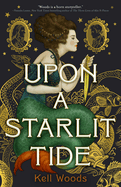
| Publisher: | Tor | |
| Genre: | Fairy Tales, Folk Tales, Legends & Mythology, Fantasy, Romance, Fiction, Historical | |
| ISBN: | 9781250852519 | |
| Pub Date: | February 2025 | |
| Price: | $28.99 |
| Science Fiction & Fantasy |
by Kell Woods
Upon a Starlit Tide by Kell Woods (After the Forest) is a deeply enchanting novel. Set in 18th-century French high society in Saint-Malo, Brittany, this dark and luscious world is full of sailors, smugglers, fishermen, and the Fae.
The Malouins know that their success at sea comes from their connection with Brittany's supernatural folk. Many Malouin families have thrived and become wealthy merchants and traders, but no family has risen higher than the Léons, the "Lions of the Sea." Jean-Baptiste, the patriarch, has three beautiful daughters: Veronique, Charlotte, and Lucinde. Luce, the youngest, was adopted by Jean-Baptiste after he found her on one of his voyages, and her sisters resent the way Jean-Baptiste favors her. Luce herself longs to go to sea, which has always called to her, and she resents the strictures of Malouin society, which require her to stay at home as all demure, upper-class ladies do. Although her feet are "gnarled and brittle... turned inward and under," which makes every step painful, Luce is determined to explore her world, taking secret sailing lessons from her friend, an English smuggler.
But when Luce rescues a man from the sea, her action sets into motion a series of events that rock the very foundations of Saint-Malo. No longer content to roam the shore, Luce begins to play a much higher stakes game with the sea and its spirits.
Paying homage to both "Cinderella" and "The Little Mermaid," Upon a Starlit Tide is a ravishing novel of magic and bravery. Fans of Naomi Novik or Juliet Marillier will adore it. --Jessica Howard, freelance book reviewer
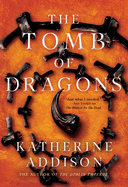
| Publisher: | Tor | |
| Genre: | Epic, Fantasy, Fiction, Action & Adventure | |
| ISBN: | 9781250816191 | |
| Pub Date: | March 2025 | |
| Price: | $28.99 |
| Science Fiction & Fantasy |
by Katherine Addison
An unassuming hero must move forward after trauma and seek reparations for a historic crime in this emotionally deep, friendship-affirming fantasy mystery. The Tomb of Dragons is the third in Katherine Addison's Cemeteries of Amalo series, set in the universe of her breakout novel, The Goblin Emperor.
Othala Thara Celehar's victory over a dangerous evil in the previous book, The Grief of Stones, came at the price of his power to speak to the dead and therefore his standing as Witness for the Dead. Now he must decide who he is without that title. He continues to follow the calling of his god, "even though I wasn't sure I had one anymore." He will also learn once and for all whether his calling is finished with him when a group of miners forces him to confront a long-dead, vengeful dragon spirit trapped within a mountain. Celehar will have to face down some of the nation's most powerful players to see justice served.
Addison (The Witness for the Dead) continues to flesh out her world, adding new political and economic details along with her own take on dragons. The core of the story reckons with the complexity of healing, whether from a widespread social injustice or a personal crisis. Celehar won't endure his struggles alone; he is supported by friends familiar and new, and fans will be happy to see cameos from the Goblin Emperor, among others. Readers who are up to date on Celehar's earlier ventures will derive the most enjoyment from this installment. Readers new to Addison's world should consider enjoying her highly recommended backlist. --Jaclyn Fulwood, blogger at Infinite Reads
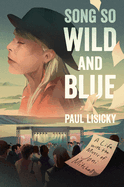
| Publisher: | HarperOne | |
| Genre: | Biography & Autobiography, Women, Self-Help, Personal Growth, Happiness, Rich & Famous, Music, Storytelling, Entertainment & Performing Arts, Individual Composer & Musician, Motivational & Inspirational, Performing Arts | |
| ISBN: | 9780063280373 | |
| Pub Date: | February 2025 | |
| Price: | $28 |
| Starred | Biography & Memoir |
by Paul Lisicky
The music of Joni Mitchell has provided more than simply a much-loved soundtrack to eras of author Paul Lisicky's life. It's been his companion through heartache and despair; it has taught and inspired him, certainly, but it's also been an object of study, even during periods of time when his allegiance strayed to other singers and sounds.
Having discovered Mitchell's music when he was a budding songwriter, Lisicky (The Narrow Door; Later: My Life at the Edge of the World) examines the artist's work with a depth of musical understanding, emotional connection, and personal insight. Song So Wild and Blue is an intimate encounter that grippingly depicts the influence an artist can have on another person's life, the power that art can have in helping people make sense of their own lives.
Lisicky's work braids memoir, criticism, and cultural study as he tracks himself, Mitchell, and American society through the end of the 20th century and into the 21st with growing awareness and tenderness. Lisicky shares how Mitchell often showed him the bravery required to stay creatively fresh and relevant, not to settle for whatever level of acclaim comes (or doesn't come) one's way. "When I listened to Court and Spark, I realized that you could still be yourself--you could keep all your chords and musical figures intact but with more vitamins: enhanced, emboldened, ripped."
Ultimately, Song So Wild and Blue is a fascinating personal tribute to one of the most original and influential voices of the 20th century, crafted so that readers can see Joni Mitchell from new angles, through the prism of Lisicky's artistry. --Elizabeth DeNoma, executive editor, DeNoma Literary Services, Seattle, Wash.
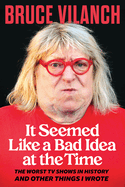
| Publisher: | Chicago Review Press | |
| Genre: | Biography & Autobiography, Guides & Reviews, Television, Entertainment & Performing Arts, Memoirs, Performing Arts, LGBTQ+, Jewish | |
| ISBN: | 9780914091929 | |
| Pub Date: | March 2025 | |
| Price: | $28.99 |
| Biography & Memoir |
by Bruce Vilanch
Bruce Vilanch would likely take issue with the prevailing wisdom that there are no bad ideas in a brainstorm. In the unceasingly witty It Seemed Like a Bad Idea at the Time, he shares his experiences as a writer for "what have been called by many critics, bloggers, podcasters, sponsors, and some of my relatives the worst shows in the history of television." For this distinction and for this book, anyone with a soft spot for late-20th-century-Hollywood cheese should say "Thank you."
Vilanch conducts postmortems on a dozen-odd projects spanning 1976 through 1998; they include the occasional theatrical release and Broadway foray. Of all these efforts, the best remembered may be Can't Stop the Music (1980), a movie starring the "iconically gay" disco group the Village People, but Vilanch's most notorious output is surely The Star Wars Holiday Special (1978). Explaining Carrie Fisher's uncoerced involvement, Vilanch says that the actor "wanted Leia to sing, specifically something by Joni Mitchell."
For all the dreck on parade herein (see The Brady Bunch Hour), a less mean-spirited book centered on showfolk probably doesn't exist. It Seemed Like a Bad Idea at the Time offers a priceless historical perspective from an industry insider who notes that, while much of his work makes viewers cringe today, this sort of entertainment "didn't bother people too much back then." A co-writer for 25 Oscar telecasts, two of which earned him Emmys, Vilanch has done some fine work, including this book. --Nell Beram, author and freelance writer
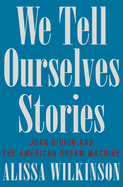
| Publisher: | Liveright | |
| Genre: | Biography & Autobiography, Women, History & Criticism, Film, Popular Culture, Entertainment & Performing Arts, Social Science, Performing Arts | |
| ISBN: | 9781324092612 | |
| Pub Date: | March 2025 | |
| Price: | $29.99 |
| Biography & Memoir |
by Alissa Wilkinson
Here's an irresistibly fresh and provocative take on Joan Didion: film critic Alissa Wilkinson believes the writer "is perhaps best, or most fruitfully, understood through the lens of American mythmaking in Hollywood." Wilkinson makes the case in the trenchant and well-substantiated We Tell Ourselves Stories: Joan Didion and the American Dream Machine.
A fifth-generation Californian, Didion (1934-2021) grew up in Sacramento enamored of John Wayne--"the embodiment of the best possible outcome of her pioneer heritage, of the American myth," writes Wilkinson; Didion invoked Wayne in her first novel, 1963's Run River, and lionized him in a 1965 essay. As a young woman living in New York, Didion wrote film criticism for Vogue and National Review. In 1964, she and her husband, writer John Gregory Dunne, decided to give screenwriting a whirl and moved to Los Angeles, where they "sat at the center of Hollywood life," reports Wilkinson. The couple returned to New York in 1988, after which Didion largely trained her focus on politics, taking every opportunity to point out the performative aspect of being a politician.
Wilkinson (Salty) gives a gift to Didionophiles by lingering on a pre-fame Didion's underscrutinized film criticism. (It shouldn't surprise readers that her tastes didn't run toward the experimental.) We Tell Ourselves Stories provides yet another service: it tracks Didion's evolving politics across her lifetime. Wilkinson notes that it was Didion's disgust with Republicans' embrace of Hollywood actor turned politician Ronald Reagan that made her switch political parties--still another way that Tinseltown helped refine her thinking. --Nell Beram, author and freelance writer

| Publisher: | Random House | |
| Genre: | Social Classes & Economic Disparity, United States, Emigration & Immigration, Civil Rights, 20th Century, History, Social Science, Political Science | |
| ISBN: | 9780593449295 | |
| Pub Date: | February 2025 | |
| Price: | $32 |
| Social Science |
by Yoni Appelbaum
The real problem behind the U.S. housing crisis is not a lack of affordable homes but of mobility, argues historian Yoni Applebaum in the insightful Stuck: How the Privileged and the Propertied Broke the Engine of American Opportunity. People can't afford to live where they want to live. Although in some places "housing is so cheap it can't be given away," such areas lack opportunities--namely, well-paid jobs and robust services.
Applebaum, a deputy executive editor at the Atlantic, traces the origins and fluctuations in mobility in the U.S. He specifically details how constant migration helped the country and its citizens, and how zoning laws and other restrictions eventually curbed mobility and therefore opportunity. Applebaum cogently points out the many horrific flaws in American housing policies, which were (and still are) based in racist motivations. For instance, the nation's first zoning law was passed in 1885 in Modesto, Calif., to limit where laundries--a trade dominated by Chinese immigrants who usually lived in their shops--could operate. In New York City, reformers and policy makers targeted tenements because they housed immigrants and "undesirable populations."
Applebaum includes relevant personal anecdotes, such as how his family was priced out of their Cambridge, Mass., neighborhood, and how his own great-grandfather lived in New York City tenements. However, Stuck is not a memoir. As a history, it covers the founding and structure of Plymouth Colony, then works its way forward to the 21st century. Appelbaum uses case studies of particular people, families, and places to create dynamic portraits within a dense historical and legal landscape. --Nina Semczuk, writer, editor, and illustrator
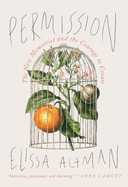
| Publisher: | Godine | |
| Genre: | Self-Help, Biography & Autobiography, Nonfiction (Incl. Memoirs), Writing, Language Arts & Disciplines, Memoirs, Creativity | |
| ISBN: | 9781567927634 | |
| Pub Date: | March 2025 | |
| Price: | $30 |
| Reference & Writing |
by Elissa Altman
In Permission, memoirist Elissa Altman offers heartening advice on writing about traumatic family history.
Altman (Motherland) and her father, Cy, shared a "non-secret secret": his mother abandoned him when he was three years old. He and his sister spent time in an orphanage and foster home. Although their mother did return home three years later, permanent psychological damage had been done. Cy's dreams of going to university and becoming a poet would remain unfulfilled, as well as his desire to write the story of his mother leaving, because he "had been warned not to." Altman, like her father, felt that the secret "was the story that changed everything I, too, thought," and she was caught in "an intergenerational sin of omission." For divulging the abandonment in her first memoir, Altman became persona non grata in her family. "We did not give you permission. It was not your story to tell. You don't own it," a cousin fumed to her.
While acknowledging the emotional pain of being cut out of her family, Altman responds with a defiant mantra she recites to her students: "If this particular story touched you directly, you have every right to write it." To illustrate, she draws on a stunning roll call of autobiographical works, such as Barry Lopez coming to terms with childhood sexual molestation. It is worth taking the risk to recount traumatic memories, Altman argues, because it defuses shame.
Practical chapters on giving oneself permission to write by eliminating distractions, devoting time, and developing rituals will be particularly useful for aspiring memoirists. Those captivated by family history will also find much of interest. --Rebecca Foster, freelance reviewer, proofreader, and blogger at Bookish Beck
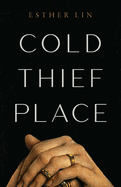
| Publisher: | Alice James Books | |
| Genre: | Women Authors, American, Death, Grief, Loss, Poetry, Subjects & Themes, Asian American & Pacific Islander | |
| ISBN: | 9781949944709 | |
| Pub Date: | March 2025 | |
| Price: | $24.95 |
| Poetry |
by Esther Lin
Esther Lin's poems are filled with stories: those of Odysseus and Emma Bovary and Anna Karenina, and those of the author's father, her grandfather, and her mother. In Cold Thief Place, 2023 Alice James Award winner Lin offers a haunting collection that draws upon memory and history, both her own and her ancestors'. In early poems like "I See Her Best," the details of her mother--"Hair glossy as a catfish flank./ A lone woman released from China/ to join her fiancé in Vietnam"--stand out more clearly than those of Lin herself, whose name, the poem tells us, "means hidden one."
Lin is a champion for undocumented writers, and several poems trace her experience as a child born in Brazil to Chinese immigrants living undocumented in the United States. "The Real Thing" describes a trip from New York to Virginia, where they visit a lawyer and the DMV. She is asked, laughingly, "Your English is so good. How can you/ be illegal?" The rhythmic poem makes skilled use of repetition, sometimes of single words, sometimes long phrases that layer meaning on each iteration.
So many of the poems that look closely at her mother's life, before she became a wife and mother, have a searching quality, as if Lin is looking for herself in them. She keeps finding these commonalities, although other poems chronicle the many ways her mother was difficult or even abusive. She asks, "did we share/ this too/ our bodies/ houses for our/ best stories." Despite their varied subjects, each poem tells Lin's story, documenting her history and creating space for other voices like her own. --Sara Beth West, freelance reviewer and librarian

| Publisher: | Little, Brown Books for Young Readers | |
| Genre: | Poetry (see also Stories in Verse), Animals, Humorous Stories, General, Juvenile Fiction | |
| ISBN: | 9780316417129 | |
| Pub Date: | March 2025 | |
| Price: | $20.99 |
| Starred | Children's & Young Adult |
by Mary Ann Hoberman, illust. by Marla Frazee
Beasts, birds, and bugs come out to work, play, and lounge poolside in the lighthearted, lavishly illustrated poetry collection How Elegant the Elephant: Poems About Animals and Insects by former children's poet laureate Mary Ann Hoberman (Forget-Me-Nots: Poems to Learn by Heart), with art by Marla Frazee (In Every Life).
Porcupines run backwards, squirrels metaphorically enter the hotel industry, and a common pest is the solution to a riddle in Hoberman's 68 posthumously published poems. Frazee's illustrations bind many of the poems into a narrative: "Abracadabra" asks if a zebra is "black striped with white" or "white striped with black" under a striking portrait of a bow-tied zebra seated at a concierge desk. "It feels so fine to be a pig," extols the next poem, while a cheerful porcine family wheels their mud-dripping luggage toward a beckoning squirrel in a bellhop uniform. The final poem in the triad, "An Interesting Fact," features another squirrel bellhop showing a kangaroo couple into their uncomfortably low-ceilinged hotel room.
Hoberman's skipping, dancing scansion longs to be read aloud, and her often brief line lengths should help newer readers feel confident doing so. The collection features eight new poems in addition to 60 previously published works spanning 65 years, all of which have a fresh, timeless feel. Frazee's pencil and watercolor illustrations add elements of whimsy, and her stories are pitched perfectly to play with the text. The joy of wordplay, rhyme, and rhythm shine in every entry, ready to usher children into the magic and possible humor of the poetic form. Adults are welcome, too; please leave seriousness at coat check. --Jaclyn Fulwood, youth services manager, Allen County Public Library
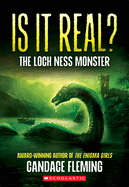
| Publisher: | Scholastic | |
| Genre: | Zoology, Paranormal & Supernatural, Folklore & Mythology, Science & Nature, Social Science, Juvenile Nonfiction | |
| ISBN: | 9781339037936 | |
| Pub Date: | March 2025 | |
| Price: | $8.99 |
| Starred | Children's & Young Adult |
by Candace Fleming
Is there something in the water? Sibert Award-winning author Candace Fleming (Honeybee; The Enigma Girls) teaches readers the foundational skills for conducting a thorough and proper investigation in the engrossing, wholly accessible middle-grade nonfiction Is It Real?: The Loch Ness Monster.
"You are an investigator for the Black Swan Scientific Investigation (BSSI) team. Your job is to unravel--if you can--the natural world's greatest mysteries." Beginning with the first sightings in April 1933, Fleming takes readers step-by-step through the evidence for and against the existence of the legendary Loch Ness Monster of Scotland. After presenting the decades of accounts and corroboration, Fleming helps readers analyze the material, educating about types of evidence (direct vs. circumstantial) and standard investigation practices. Moving from definitions and concepts, readers are given "sample" cases and then encouraged to apply their learnings to the Loch Ness evidence. As readers reach the end of their investigations and form their own conclusions, Fleming brings them up to speed on more recent developments, including current theories--"Could Nessie sightings have actually been sightings of eels that had grown to an extreme size?"--and sightings as recent as 2024.
While Is It Real? explores an unconfirmed creature's existence, the scientific investigation principles are sound (and backmatter includes a bibliography and source notes). Fleming addresses readers directly, using the second-person narrative, which lends an intimate teacher/student feel to the text--readers can reach their own conclusions and Fleming never insists on her own view or suggests a correct answer. This is a rare title that should excite young science enthusiasts and paranormal fans alike. --Kyla Paterno, freelance reviewer
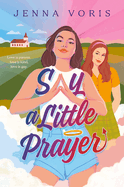
| Publisher: | Viking | |
| Genre: | Romance, General, Social Themes, Young Adult Fiction, Religion & Faith, LGBTQ+ | |
| ISBN: | 9780593692745 | |
| Pub Date: | March 2025 | |
| Price: | $12.99 |
| Starred | Children's & Young Adult |
by Jenna Voris
A queer teen forced to attend Bible camp decides she will commit seven deadly sins in seven days--finding romance with the pastor's daughter along the way--in this humorous, sincere contemporary YA novel.
Seventeen-year-old Riley Ackerman came out as bisexual, got very tired of Pastor Young's sermons about "the dangers of homosexuality," and stopped going to church. Her family continued to attend until Pastor Young shunned Riley's older sister, Hannah, for having an abortion; now the Ackermans are pariahs in their small town. Green-eyed, brown-haired Riley gets into a fight at school defending Hannah's reputation and is given a choice: suspension or spend a week at church camp "reflecting on [her] actions." The only upside is that Riley gets to room with her best friend, Julia, the pastor's daughter--though the girls' friendship has not been the same since Riley left church. At camp, Riley chafes at Pastor Young's sanctimonious "condemnation of sin." She hatches a plan: commit each of the seven deadly sins and "spin them into something positive and useful" to expose the pastor's hypocrisy and spark a rebellion in the congregation.
Say a Little Prayer by Jenna Voris (Made of Stars) is a joyfully irreverent, sharply comedic YA contemporary novel that tackles weighty issues like religious trauma and purity culture with nuance and heart. Riley's sarcastic (often laden with pop-culture references) and reflective first-person POV is authentic and endearing, the budding romance between her and Julia is heady and sweet, and the relationships she forges with her fellow campers are surprising and complex. Voris's unapologetic, community-minded queer teen should find fans in readers of Becky Albertalli and Julie Murphy. --Alanna Felton, freelance reviewer
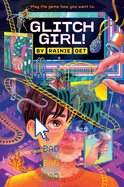
| Publisher: | Kokila | |
| Genre: | Health & Daily Living, General, Mental Health, Stories in Verse (see also Poetry), Juvenile Fiction, LGBTQ+, Neurodiversity | |
| ISBN: | 9780593696514 | |
| Pub Date: | March 2025 | |
| Price: | $18.99 |
| Children's & Young Adult |
by Rainie Oet
Rainie Oet's authentic, heartrending middle-grade novel-in-verse, Glitch Girl!, features a neurodivergent "nonbinary girl" who desperately wants to be loved as her true self: "someone good, in between girl and boy, and closer to girl."
Protagonist J-- (her "old 'boy' name" is crossed out) narrates with stark, sometimes brutal honesty her experiences from 2004 to 2007 in fifth through seventh grade. She depicts her world through two lenses: her intense crush on friend Junie, and her devotion to building virtual amusement parks in her Coaster Boss computer game. At her new school, J-- resolves to "try to keep perfectly still" despite ADHD-fueled stimming. When J-- games, though, she is in complete control; she can restart each day unburdened from embarrassment about how her dysregulation and impulsivity impact the people around her. "My mind is/ a broken mirror, reflecting a thousand/ corners of the world at once," J-- admits. "Sometimes it's magical. Mostly it's horrible."
Oet masterfully uses the game as an allegory for J--'s struggle to accept her intersecting identities; J-- oscillates between wanting to please the virtual park guests and wanting to purposely injure or destroy them. The medium echoes the turmoil with punchy, blunt poems that give way to longer, lyrical passages rich with metaphor. This moving debut is inspired by Oet's own adolescence and will likely resonate with mature middle-grade readers who yearn for complex characters and vivid figurative language. --Kieran Slattery, freelance reviewer, teacher, co-creator of Gender Inclusive Classrooms
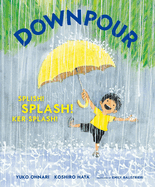
| Publisher: | Red Comet Press | |
| Genre: | Weather, Concepts, Senses & Sensation, Science & Nature, Juvenile Fiction | |
| ISBN: | 9781636551142 | |
| Pub Date: | March 2025 | |
| Price: | $18.99 |
| Children's & Young Adult |
by Yuko Ohnari, Koshiro Hata, trans. by Emily Balistrieri
Yuko Ohnari and Koshiro Hata, a married Japanese creative couple, present a jubilant picture book, Downpour: Splish! Splash! Ker-Splash!, that celebrates the endless delights of a summer rainstorm.
"The ground's burning hot," a child notices. Looking up reveals "dark clouds... coming this way." Almost immediately, raindrops begin to "PLIP! PLIP! PLIP!" The child's keen observations are immediate: "it smells like the sky. It smells like the ground, too." Opening an oversized yellow umbrella provides temporary shelter to enjoy the drum-like sounds of the falling rain. But soon enough, the child is freely running and jumping through the downpour: "All the raindrops come to me./ They all come talk to me." Sopping wet, the child returns home filled with energetic joy. The fate of the discarded shoes may be uncertain, but the yellow umbrella pops back up just in time for bathtime fun.
While Ohnari and Hata's focus is clearly on the child's evolving reactions--concern, endurance, elation, gratitude--they're also carefully attentive to his surroundings: the neighborhood's diverse houses, a few with parked cars, the flora and fauna (including ladybugs and beetles trying not to be washed away!), and various iterations of the rainstorm. Their vivaciously colorful spreads are an exuberant multisensory invitation--not just to witness the child's whimsical, cheerful abandon but to imagine the very sounds of watery merriment. Translator Emily Balistrieri rises to the challenge of the duo's English-language debut, with plenty of rhythmic onomatopoeia: "FWISH FWISH... SPOOSH-SPLOOSH-SPLOOSH. SPLISH... KER-FWOOOOOOOOSH." Every moment of boisterous play is delightfully captured in text and image. --Terry Hong